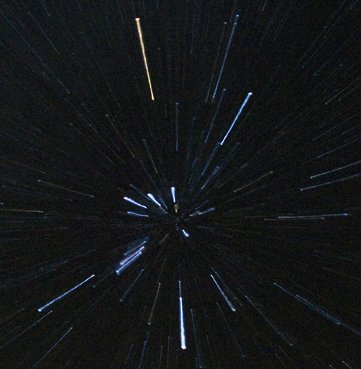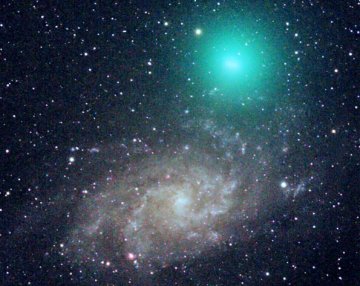 |  By Jeremy Hsu Staff Writer posted: 02 January 2008 06:31 am ET |
The mysterious origins of cosmic rays that slam into the Earth's atmosphere could soon be revealed, thanks to a better ground-based sensor that costs less than balloons or satellites.
Cosmic rays are thought to come from either the center of the galaxy or a nearby supernova, and knowing which is true will help astrophysicists paint a more accurate picture of the cosmos.
"Cosmic rays are not a spectator phenomenon in the galaxy — they have a role in galactic dynamics," said Scott Wakely, a University of Chicago physicist. "To understand the galaxy in a full sense, you need to understand cosmic rays."
That understanding depends on ground and space-based instruments. Satellites and balloons first detect a blue flash — known as Cerenkov radiation — when cosmic rays smash into the upper atmosphere and release energy.
The cosmic ray particles then break into a shower of smaller pieces and produce a second blue flash. Ground sensors usually only detect the second flash.
Tens of thousands of particles may bombard an area the size of a small parking lot on Earth daily, while rarer high-energy particles strike less than once a year in the same area. Satellites and balloons do a better job of detection by rising above the atmosphere, but they can only cover a small area.
"A $400 million satellite is only a couple particles per year, and you want hundreds of thousands," Wakely told SPACE.com. "You always want to look for new ways to do this."
Wakely set out with colleague Simon Swordy, a physicist at the University of Chicago, to create a ground-based instrument that could detect both the first and second blue flashes. The instrument will have roughly 10 times the resolution and power of current ground-based detectors.
Scientists can use information from both blue flashes to identify a particle as a certain element and maybe even its origin. For instance, some elements will more likely come from the fiery outburst of a supernova.
"We can say that was iron or that was uranium," noted Wakely. "Those are the kinds of data you need to make progress in this business."
No one thought ground-based instruments could detect the first blue flash, until Wakely and Swordy proposed the idea with other colleagues in 2001. A team of researchers in Namibia confirmed the concept using a telescope array called HESS. Wakely later made his own observations using a telescope array called VERITAS.
"That was direct evidence that it [the technique] works," said Wakely. "The goal of this [new] instrument is to combine large area detection with the high precision of space-based sensors."
An improved instrument could also help solve at least one mystery about the energy range of cosmic ray particles. Higher energy particles — such as those from the nuclei of heavy elements like iron — are rarer than common, lower-energy particles such as protons. But physicists have puzzled over a sudden drop-off in frequency of high-energy particles at a certain point in the energy spectrum, labeling the strange kink "the Knee" because of its shape.
Some researchers suggest that supernovas which they claim produced all the cosmic rays suddenly run out of energy at "the Knee," and a new source of cosmic rays takes over on the other side. Others think that a new model of physics takes over that is beyond current scientific understanding, but no one knows for sure, without more measurements of high-energy particles from "the Knee" region.
If all goes well, Wakely and Swordy plan to submit a proposal in three years to build the instrument they are designing. The National Science Foundation has already given a five-year, $625,000 grant to start drawing up the concept.




